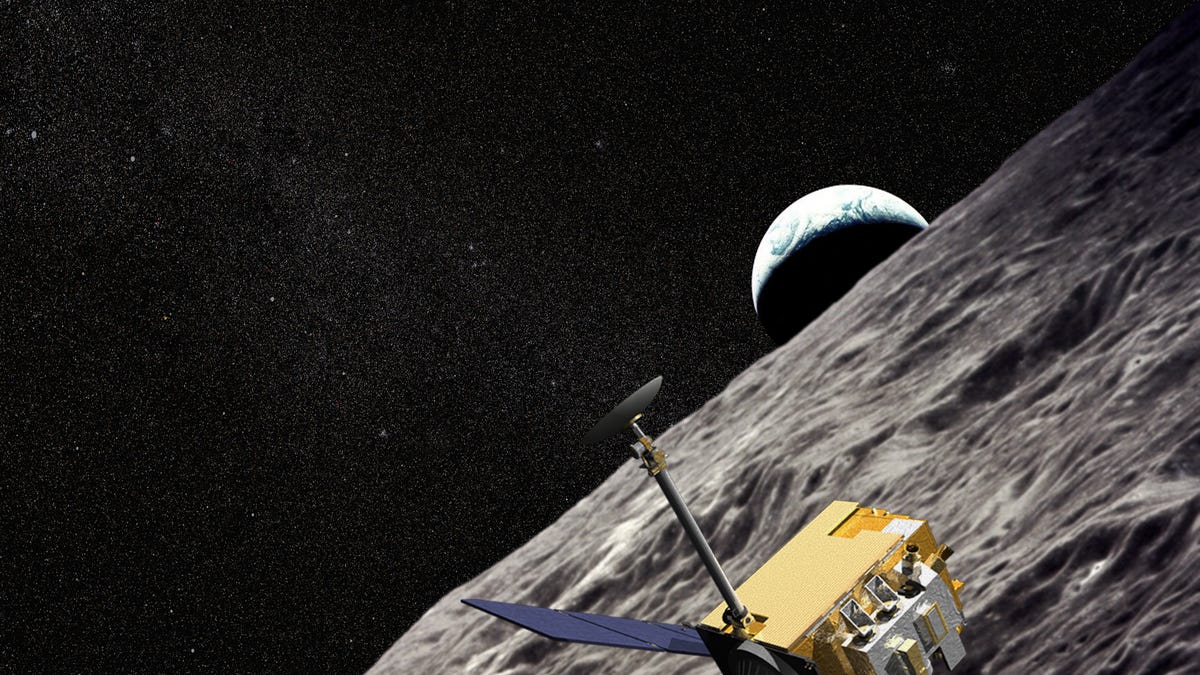A spacecraft needed to make an evasive maneuver to avoid NASA's lunar orbiter
It's getting more crowded around the moon.

An illustration of NASA's Lunar Reconnaissance Orbiter at the moon.
Increasing orbital traffic isn't just an issue above Earth. This week we learned that India's Chandrayaan-2 Orbiter circling the moon had to adjust its path to avoid coming too close to NASA's Lunar Reconnaissance Orbiter.
In mid-October, data from both the Indian Space Research Organization (ISRO) and NASA showed that the two spacecraft would pass uncomfortably close to each other near the lunar north pole on Oct. 20.
"Over a span of one week prior to the conjunction, analyses by both ISRO and JPL/NASA consistently showed that the radial separation between the two spacecraft would be less than 100 meters (328 feet) and the closest approach distance would be only about 3 kilometers (1.9 miles)," ISRO said in a statement Monday.
The two space agencies agreed that the Indian spacecraft should perform a collision avoidance maneuver on Oct. 18 to shift its orbit to avoid any future close shaves.
The path of the Chandrayaan-2 Orbiter (CH2O) before and after the collision avoidance maneuver (CAM).
Both orbiters circle the moon in a nearly polar orbit, meaning they necessarily risk coming near each other over the lunar poles.
"NASA and Indian Space Research Organization fully coordinated the collision avoidance maneuver conducted by ISRO's Chandrayaan-2 spacecraft Oct. 18," Nancy Jones, NASA spokesperson at Goddard Space Flight Center, said in an email to CNET. "Such coordination between space agencies is an ongoing part of ensuring safe operation of satellites around the moon. At no time was NASA's Lunar Reconnaissance Orbiter or Chandrayaan-2 in danger."
Such maneuvers are common above Earth, where thousands of satellites orbit, particularly at lower altitudes occupied by SpaceX's Starlink and other larger constellations. But managing space traffic around other worlds can require a little more planning given the lag time for signals to travel between mission control rooms on Earth and distant locales such as the moon or Mars.
"The event highlights the importance of continual assessment of close approach situations for lunar and Martian missions," ISRO added.

